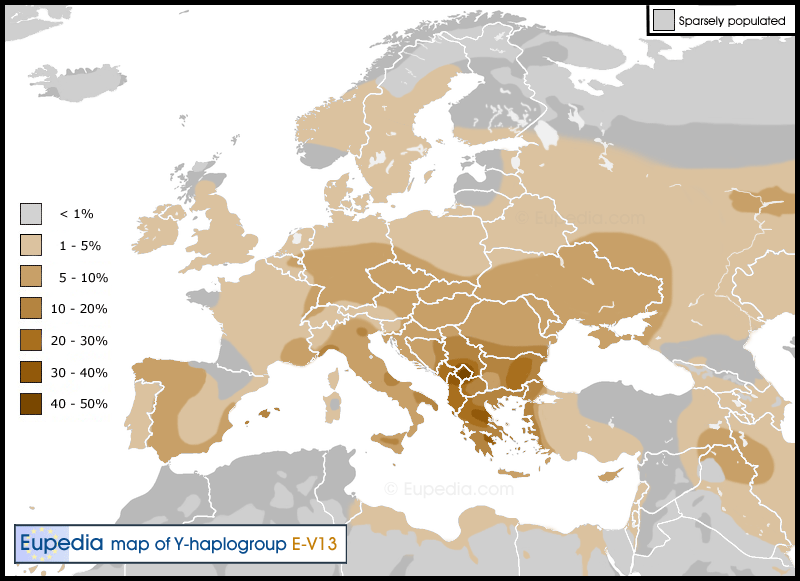These are diversity heatmaps.
You can not say E-V13 (as a whole, not particular branches that might not apply) is not Balkanic in origin due to it being widespread in all of Europe, and not say the same thing for L283 if you are basing your conclusion on the same faulty logic.
"
Haplogroup E-V13 is the only lineage that reaches the highest frequencies out of Africa. In fact, it represents about 85% of the European E-M78 chromosomes with a clinal pattern of frequency distribution from the southern Balkan peninsula (19.6%) to western Europe (2.5%). The same haplogroup is also present at lower frequencies in Anatolia (3.8%), the Near East (2.0%), and the Caucasus (1.8%). In Africa, haplogroup E-V13 is rare, being observed only in northern Africa at a low frequency (0.9%).
—
Cruciani et al. (2007)
The distribution and diversity of V13 are often thought to represent the introduction of early farming technologies, during the Neolithic expansion, into Europe by way of the Balkans.[12] The haplogroup J2b (J-M12) has also frequently been discussed in connection with V13, as a haplogroup with a seemingly very similar distribution and pre-history.[3][6][12] (There is no consensus regarding the circumstances or timing of its evolution.)"
All this is not news. Out of the blue going reactionary and attributing V13 to non Balkan peoples due to some faulty logic is perplexing.





